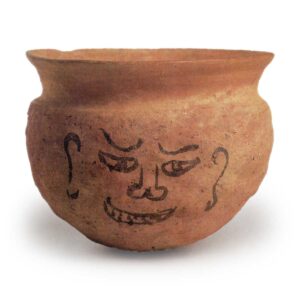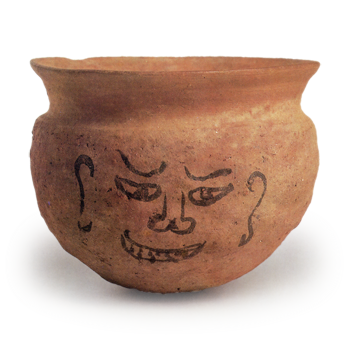
Excavated at Mae-no-ike Site, Osaka.
8th century.
Height 14.2cm, mouth diameter 17.6cm, body diameter 17.2cm.
Nagoya City Museum
This wide-mouthed jar-shaped earthenware vessel with a slightly shallow body has a human face painted in black ink on its body, with a slightly different expression on the opposite side. The expression of the raised eyebrows and raised eyes is not the expression of a peaceful human face. Twenty-six examples of this type of ink-written human mask pottery have been excavated from 13 government offices and their surrounding sites throughout Japan, from Miyagi Prefecture to Saga Prefecture. The objects depicted are limited to bowls and jars. Facial features are common, with thick eyebrows, narrow eyes, nose, mouth, long ears, and in many cases, chin hair. There are three types of human masks: one, two, and four masks, with no more than three or five masks. As seen at the Heijo Palace site and the Iba site in Shizuoka Prefecture, these human masks have been excavated from locations related to water, such as wells and large ditches, and at other sites they are often related to rivers. These human masks were never drawn as caricatures, but rather as representations of demonic masks, which are thought to have been the background of Taoist witchcraft to ward off evil demons.



